I suppose there is no sentiment that describes my feelings about Brussels better than this written by an old-time travel writer in 1903:
“As a rule, too little time is given by tourists to Bruges and Ghent, and too much to Brussels.“
– Belgium: It’s Cities by Grant Allen
Another classic travel writer/sketch artist wrote this about Brussels in 1915:
“Of Brussels I do not propose to say very much, because Brussels,… is so distinctively a modern, and even cosmopolitan city,… that it seems better in a sketch that is principally devoted to what is old and nationally characteristic in Belgium to give what limited space one has to… towns like Louvain (Leuven) or Malines (Mechelen), in which the special Belgian flavour is not wholly overwhelmed by false and extraneous influences.“
– Belgium by Joseph E. Morris

It seems a poor way to start a blog post by being negative. On the contrary, the purpose of these quotes is to give some context to my state of mind as I was preparing to explore the beer culture of Brussels. It is good to note that in fact I am not the only one throughout the history of travel writing which has felt a certain lack of enthusiasm for Brussels. I trust then that the reader by the end of this post (if not lacking the attention span it will require to go word for word) will be able to vicariously participate in the about face that has resulted from my recent journeys to Brussels upon which this post is based.
The problem I have had with Brussels is that it lacks the real character of traditional Belgium and, as Mr. Morris eludes to above, there are numerous other cities where one can enjoy the pleasures that Belgium is famous for in a much more aesthetically pleasing way. However, whether we like it or not, Brussels carries the biggest torch, so I decided to finally put years of disregard aside and plan a beer hike of sorts. I should at least be able to give informed advice to someone about Brussels’ beer culture rather that a prejudiced one. Before we take that hike around Brussels, why is Brussels so important?
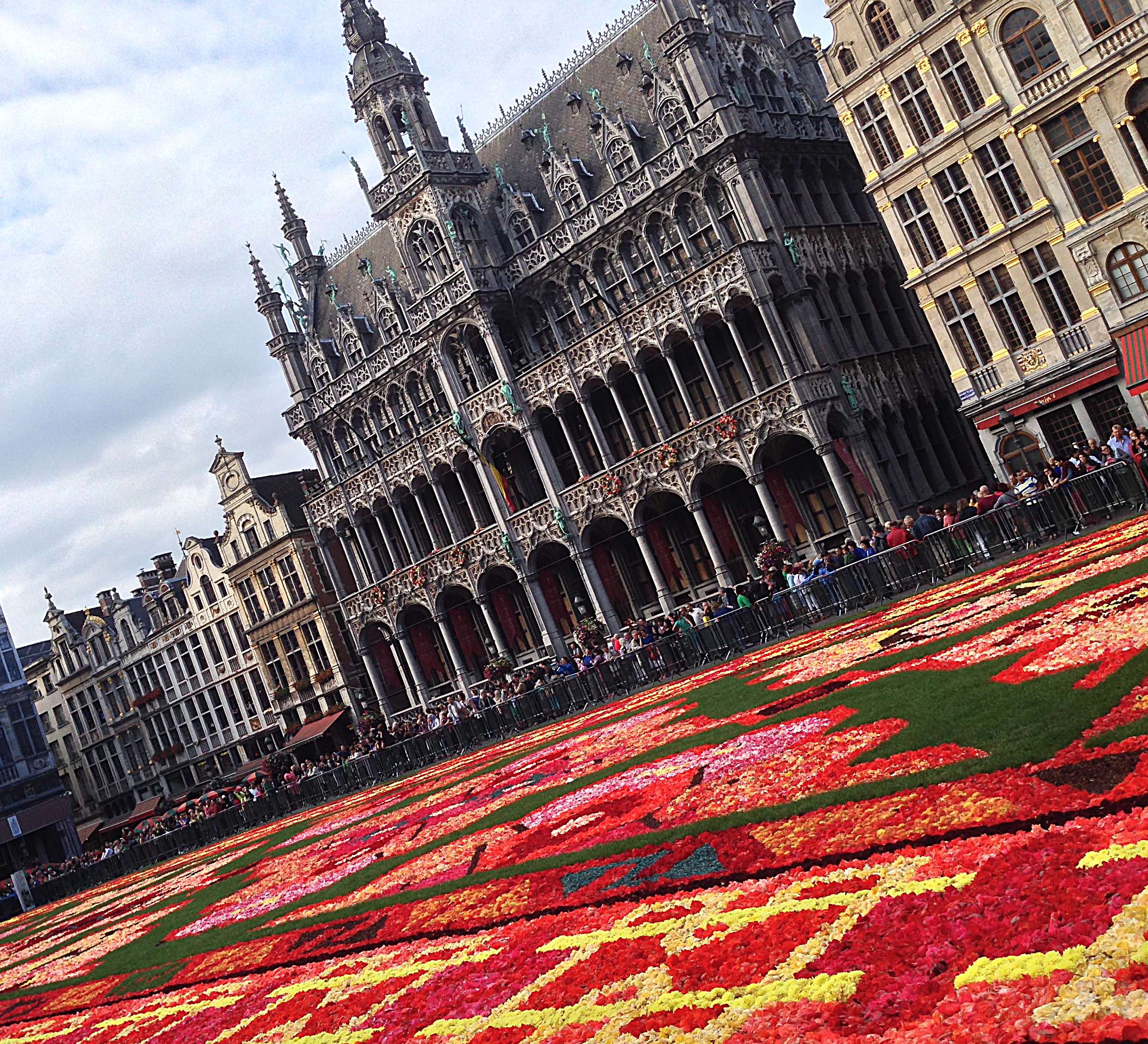
Brussels is an administrative center which holds two distinctly different cultures together. The French-speaking Wallonians and the Dutch-speaking Flemish. It does this without really looking or feeling like either of those cultures. Two of the more iconic things about Brussels are its amazing square, the Grand Place, and a cute series of statuettes depicting the act of pissing. Brussels’ history is a bit under the average radar you might say. To appreciate Brussels, it is necessary to understand what is Belgium? For that Brussels is easily the best place in Belgium to get the answer to that question. While it is not the purpose of this post to point out where to look, it is recommended not to show up at the doorstep of Belgium even to drink its reknowned beer without contemplating how Belgium came to be.
The people and land which currently make up the Kingdom of Belgium have for centuries been passed from ruling empire to empire. Roman, German, French/Burgundian, Austrian, Spanish, and Dutch to name the biggest and baddest. Most of the time, the people here have been afforded the liberty to self-govern and could be quite loyal to their foriegn rulers. There are several members of the Austrian Habsburg empire that are honored throughout Belgium. Charles V has two beers named after him. But by the early 19th century, the mentality had changed about fealty to foriegn powers.

After the defeat of Napoleon, the Congress of Vienna in 1815 placed Belgium under the rule of the guy who would not be able to control this pesky people, King William I of the Netherlands. In a time which was already rife with revolution, this turned out to be a mistake. It took 15 years for it to finally come to a head. Then for 3 days in September 1830, the city center of Brussels became a revolutionary battlefield. The Dutch sieged the city and there was fierce fighting. But this was no Alamo. After the 3rd day, the invading Dutch had simply turned around and gone home. Then on July 21, 1831, Belgium not only had its own constitution but something every other country seemed to have all throughout their history. A King. Leopold I. For hundreds of years, Belgium seesawed between peace and struggling for liberty with the waves of different European powers. During that time, the people continually rose above these struggles to provide Europe with the richness of their textiles and natural resources, and producing some of the world’s most famous artists many of whom would become court painters of other people’s kings. There in 1831, all of that past history finally lead to the moment when Belgium could sit next to these other countries rather than under them. I think the average tourist would not think to visit Philadelphia or Boston without contemplating the American Revolution. Neither should a tourist walk around Brussels without trying to connect with the events of 1830-1831.
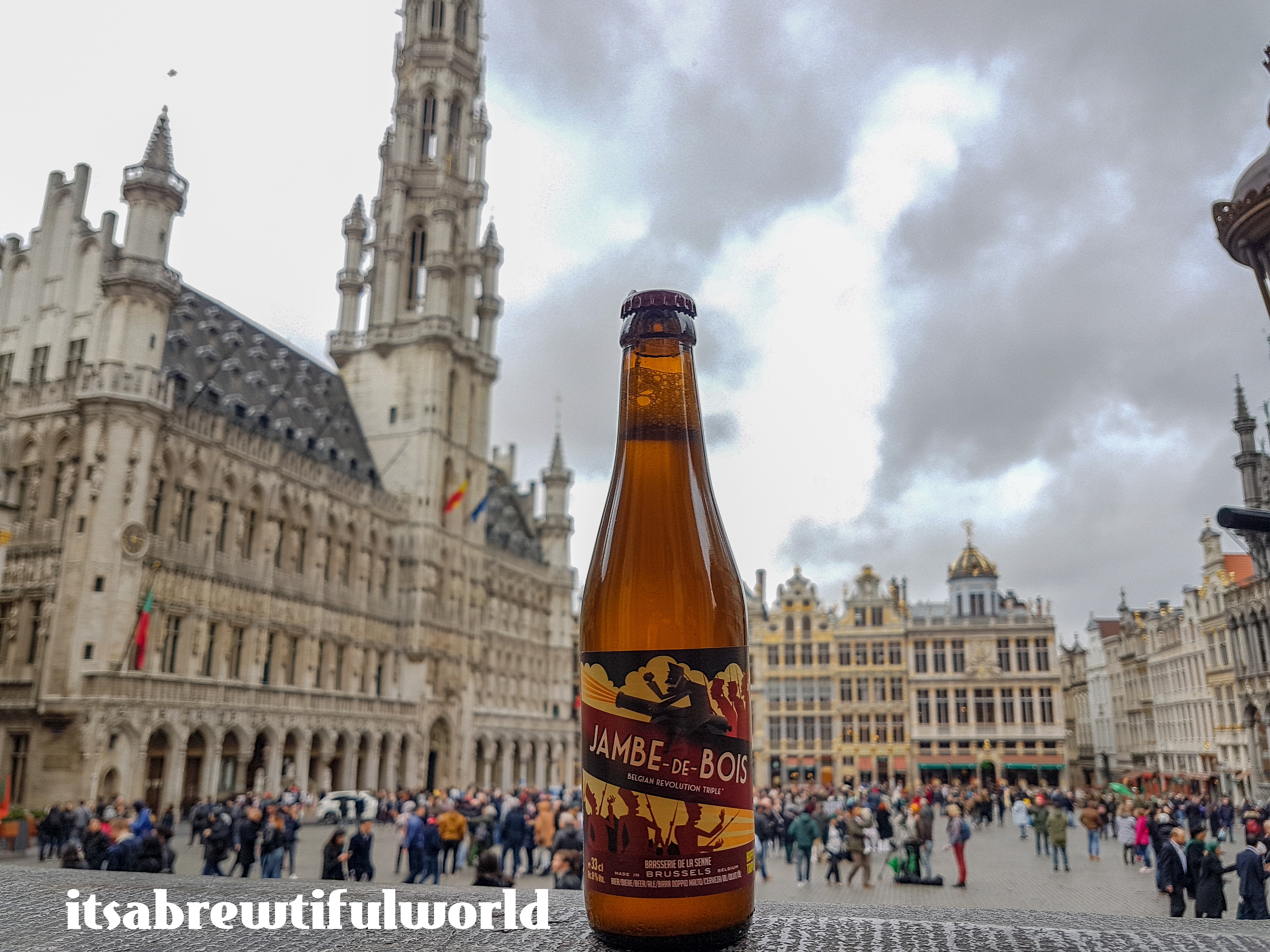
Which brings me to the hike.
Overview
The hike is designed to visit the best beer-related places in Brussels, including beer bars, bottle shops, and breweries. Along the way, we will drink a lot of beer and there is no place which celebrates lack of bladder control more than Brussels. The starting and ending point is the Brussels Central train station. For Komoot users, the route can be found here: Beer & Hike: Brussels Centrum and Cantillon Brewery.
The route will look something like this where (A) is Brussels Centraal: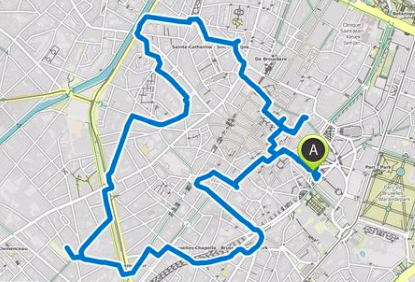
![]()
I followed it in a counter-clockwise direction and the order in which the beer sites are presented below are the order that I visited them on the route.
The Hike
Immediately proceed to the number one site in all of Belgium and that is the Grand Place. This square is dominated by the fabulous Hotel de Ville, but every direction you look there are amazing façades. The one that kicks off the walk is the one with the golden statue of a man riding a horse at the top.
La Maison des Brasseurs
Like most main squares in Belgian cities, many of the buildings that line them once belonged to local guilds or organizations you needed to belong to in order to work a particular trade. La Maison des Brasseurs (or Brewers House) was the guild for brewers and still today houses the trade association for Belgian brewers. Construction on it started in 1695, the year that the French bombarded the square to retaliate against the English and Dutch for terrorizing French harbors and the French almost totally destroyed it. This building rose up out of the reconstruction of the square. The façade has many brewing related symbols.
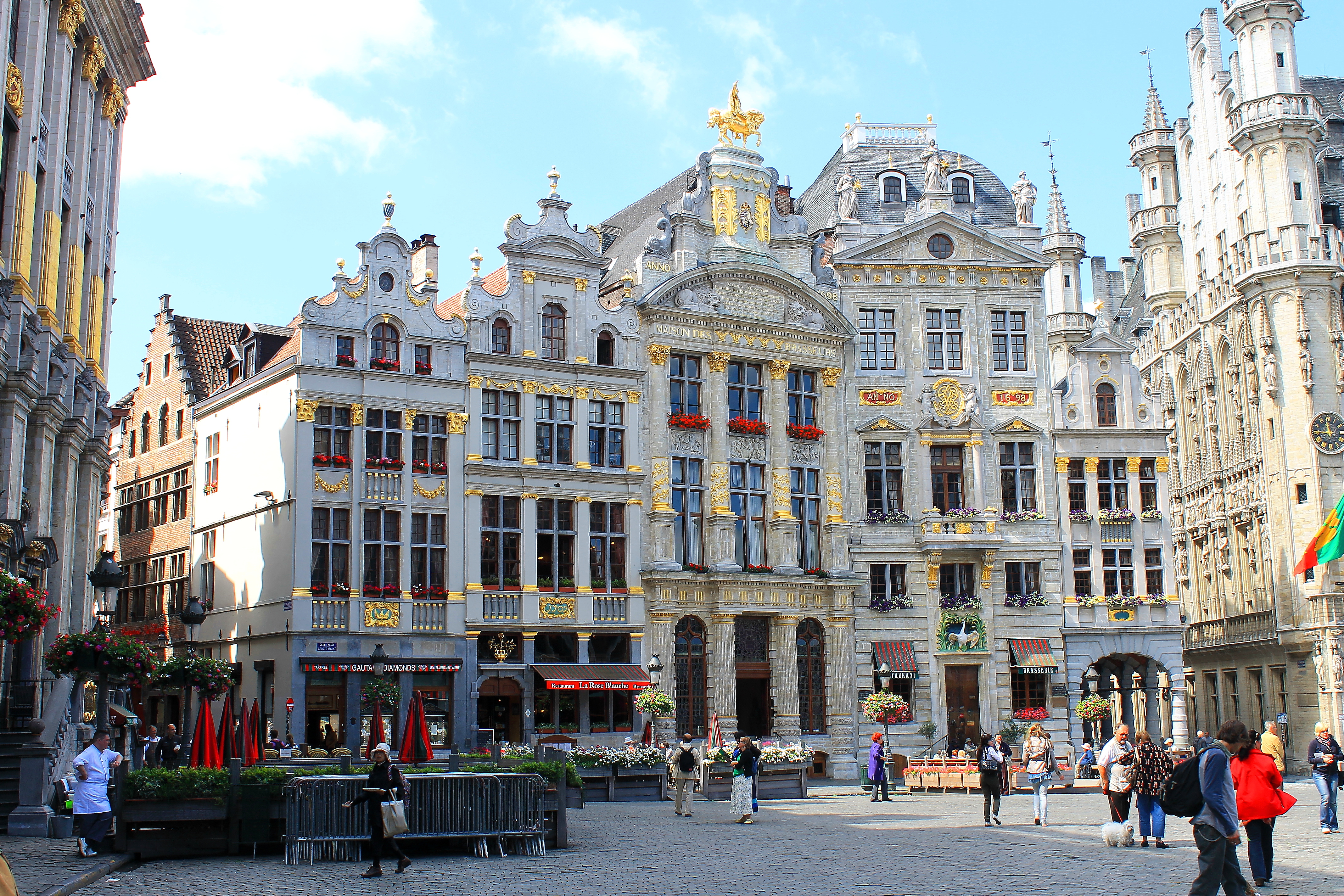
Topping the building is the statue of Duke Charles of Lorraine on a horse. Charles of Lorraine was married to Archduchess Maria Anna sister of Empress Maria Theresa ruler of the Habsburg Empire. Charles and Maria Anna co-governed the Austrian Netherlands, which consisted of Belgium and a small part of the Netherlands, starting in 1741. At the time Charles arrived permanently in the city, the statue at the top of the La Maison des Brasseurs was of Maximilian II Emanuel of Bavaria who was the governor during the destructive siege in 1695 and helped finance the rebuilding the Grand Place. So why is Charles of Lorraine’s statue there now?
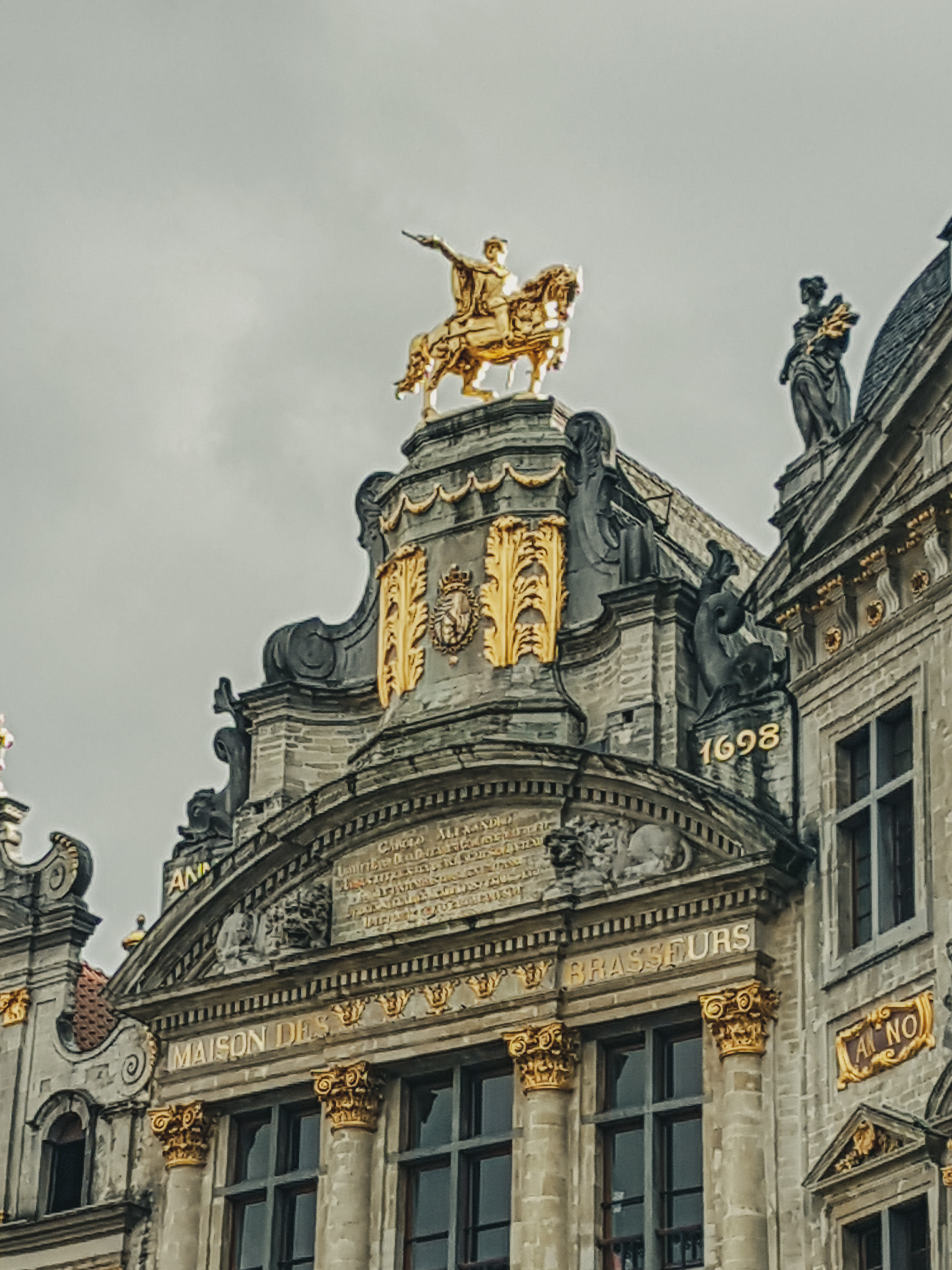
The details of Charles of Lorraine are rather dull and uninspiring on Wikipedia. I found that among my book collection, “Belgium” written by G.W.T. Omond and published in 1908 was a great resource on the impact of Charles of Lorraine on the people of Brussels.
According to Omond, the day that Charles of Lorraine arrived to Brussels “was the beginning of a long period of gaeity for the pleasure-loving city. No ruler could have suited the people of Brussels better than Charles of Lorraine.” Omond goes on to describe Charles’s preference for burgundy and throwing celebrations for guests serving burgundy, champagne, Rhine wine, and various liquors. He mentions one anecdote that when Charles became ill in 1766, the churches were “never empty all day long.” When he recovered, the city threw a huge celebration and the “fountains spouted wine; half the town got drunk”. Although I don’t have any direct evidence, it would not be far-fetched to assume Charles was a patron of the brewers. Omond sums up the feeling of the people of Brussels, “There never was a Prince so popular or so respected in Brussels before or after him”. This doesn’t seem to be an exaggeration because in 1901, when the statue of Maximilian II Emanuel broke, the people replaced it with the statue of Charles of Lorraine. It seems to make a lot of sense to begin a beer hike with a nod to perhaps the most beloved follower of Dionysus in Brussels’ history.

Today La Maison des Brasseurs houses a brewers museum in the cellar. For 5 euros you get entrance to the museum and one drink from the tap in the bar area. Folks, save your 5 euros for somewhere else. The museum is one room with some token brewing equipment and a useless film. The two beer choices were Cristal Pils and Maredsous Bruin. You don’t visit Belgium to drink pils and you are better off drinking a Maredsous somewhere else. Skip it.

Bier Tempel

This is a decent bottle and beer souvenir shop just a short distance from Grand Place. A good place to pick up a couple beers if you are into taking pictures of beer. Here I picked up the Jambe-de-Bois 1830 Belgian Revolution Tripel from Brasserie de la Senne for the featured image. Jambe-de-Bois translates to wooden leg and refers to a particular Belgian soldier who lost his leg fighting in Napoleon’s Army and then later fought in the Belgian Revolution of 1830 against the Dutch. Seemed an appropriate beer to highlight the Grand Place. There are other nice bottles shops around the old city center as well. But this one is the best located.
A la Mort Subite
website
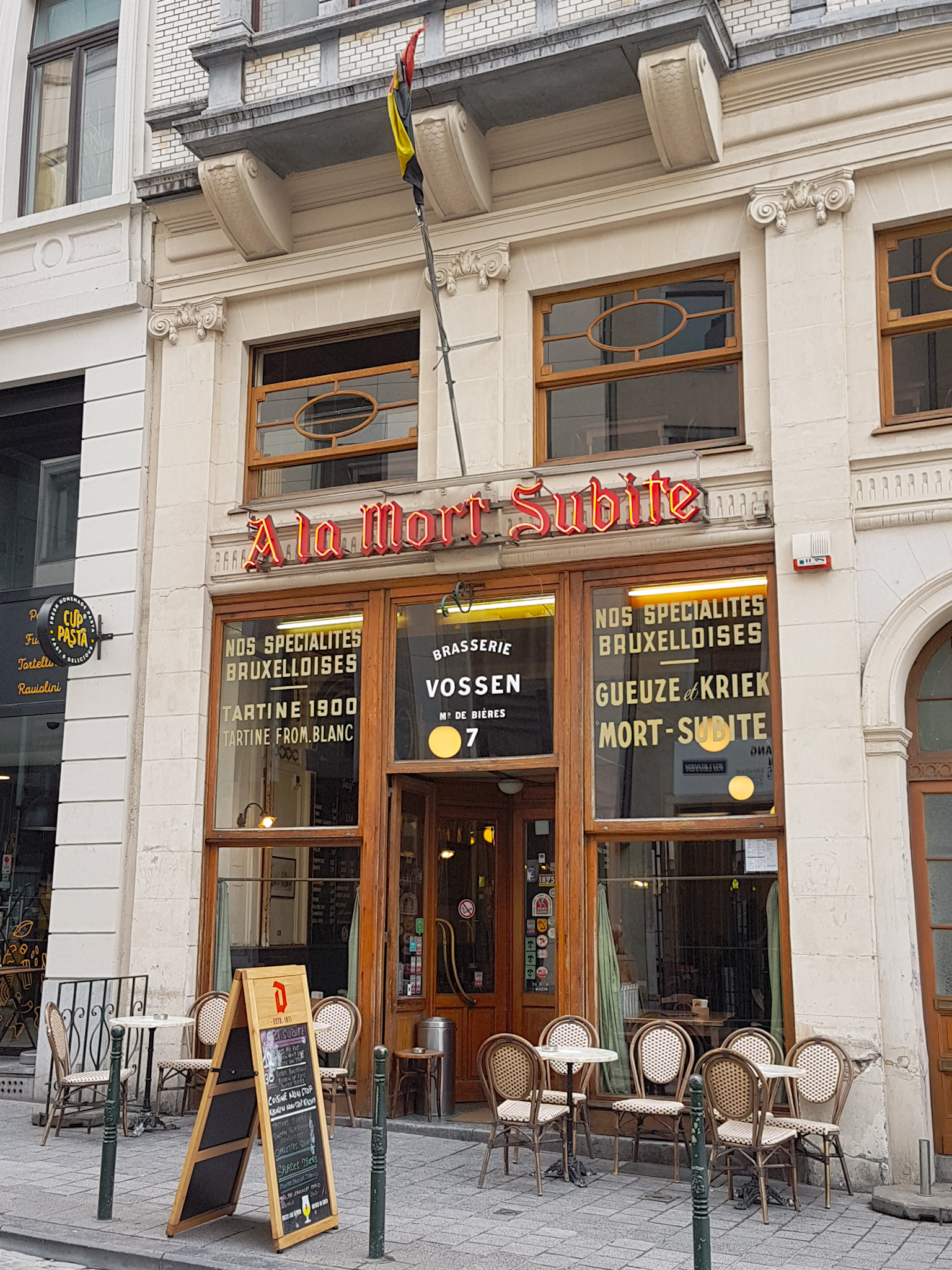
This is one of the two cafes or pubs along the route that specialize in Geuze beer. In this case, affliated with the Mort Subite brewery. This place has a bit of a Parisian cafe feel. It is definitely not the kind of atmosphere where I like to drink beer and the selection is limited, but if you want to experience a geuze in a place with a historic look, this would be a good place.
Jeanneke Pis
While you are looking for the next beer stop on this walk, you will likely see a small group of tourists crowded around a small cubby hole. Situated in that cubby hole is a statuette of a naked young girl perpetually posed with a smile of relief squatting and pissing. Before you start feeling all cultural, just know that her entire existence is based upon luring you into this street since way back in 1987, cashing in on the fame of her much older sibling Manneken.

Delirium Village
website
Just in front of Jeanneke is a series of bars with the Delirium moniker named after the beer Delirium Tremens. Each bar has its own particular specialty. Delirium Taphouse is your big board place where you can choose from any number of craft and non-craft beers on tap. Delirium Cafe is a bit more of the cozy, dark, brown bar in a cellar atmosphere where you can order from a pretty decent selection of beers (tap and bottle). Delirium Monasterium is the place to go for abbey and Trappist beers.

There are a few other places in the village but the ones I visited were the Taphouse and Cafe. For younger, inexperienced Belgian beer drinkers, these are great places to come and feel the vibrancy of the Belgian beer culture in Brussels. They were very crowded with tourists on a Saturday afternoon and it was difficult to find a table in either places. But it was full of happy youths in the midst of their grand tours of Europe and you could feel the giddy excitement that Europe does to people. For very experienced and more distinguished Belgian beer drinkers such as myself, the place might come across as too touristy.

Chez Bobonne / Beer My Friend
website
You might be a little confused if you are searching for this place on Google Maps. This location was the former home of Belgium Beer Box and now is a brewpub (Chez Bobonne) which houses a brewery (Beer My Friend). It doesn’t feel like your average craft beer bar when you enter, more like a trendy tearoom, but soon your eyes and brain adjust and the sight of a cooler full of craft beers and some beer related decor bring things into focus. Beer My Friend brews three beers and I tried the Zwanzeur, actually my first beer of the day. It’s a bit sour but with a fresh taste. The labelling is quite unremarkable and if it wasn’t for the fact that it was brewed in-house, it would probably never catch my eye.
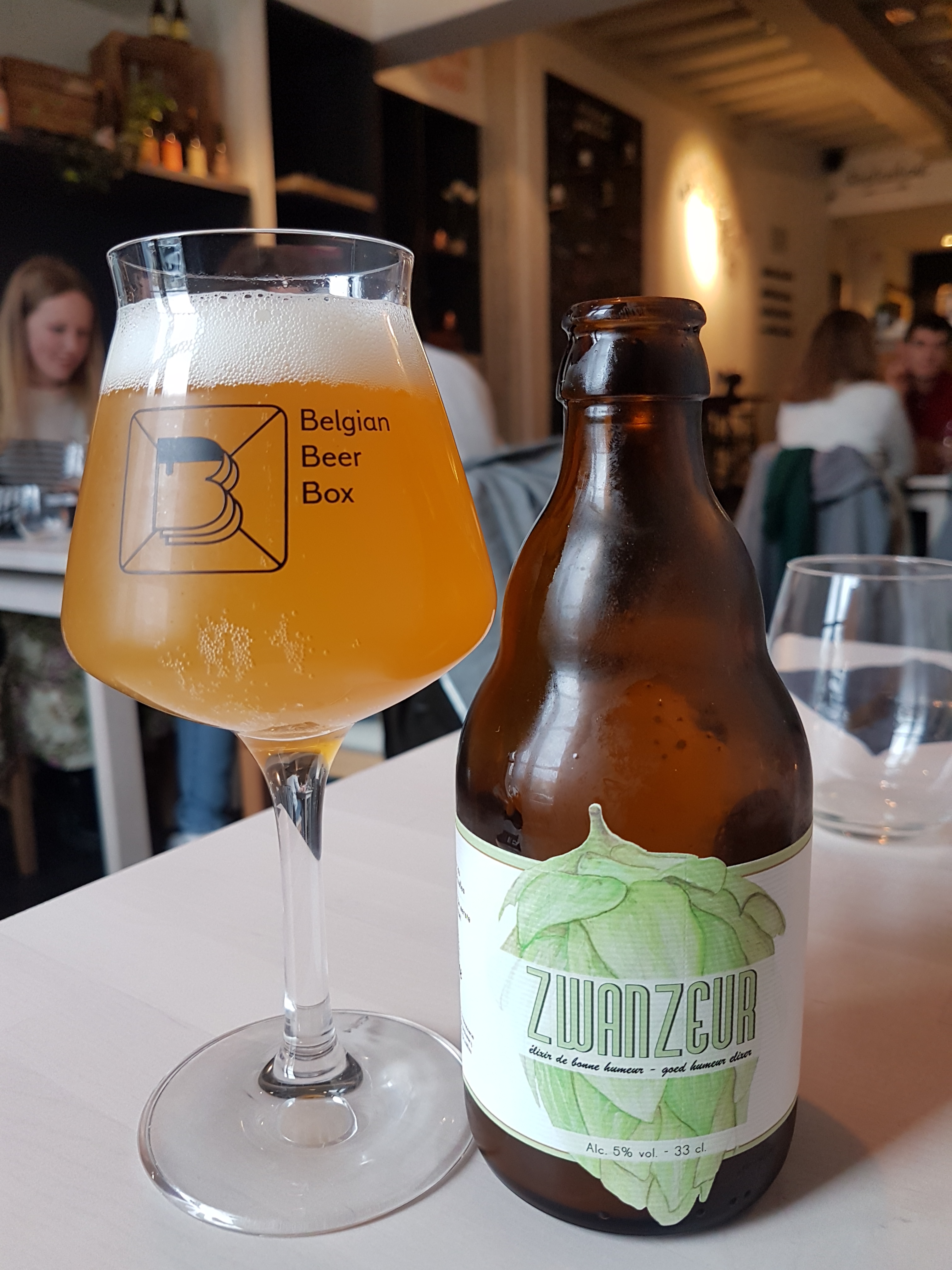
Brussels Beer Project
website

BBP is only open Thursday, Friday, and Saturday starting at 2pm, so this will be one strategic factor for when this beer hike around Brussels should occur. This is a key stop on the hike so not to be missed. This is a brewery with a mixture of established craft beers and also experimental taps. There is a fine variety of styles and a well stocked shop. At these kind of brewery bars, I am always a sucker for the dark beers, porters and stouts. I went with the Black Swan, which was a great choice for the taste but at 9.9%, was a bit potent for a 2pm beer and a buzz this early into a city hike could have zapped some of my momentum.
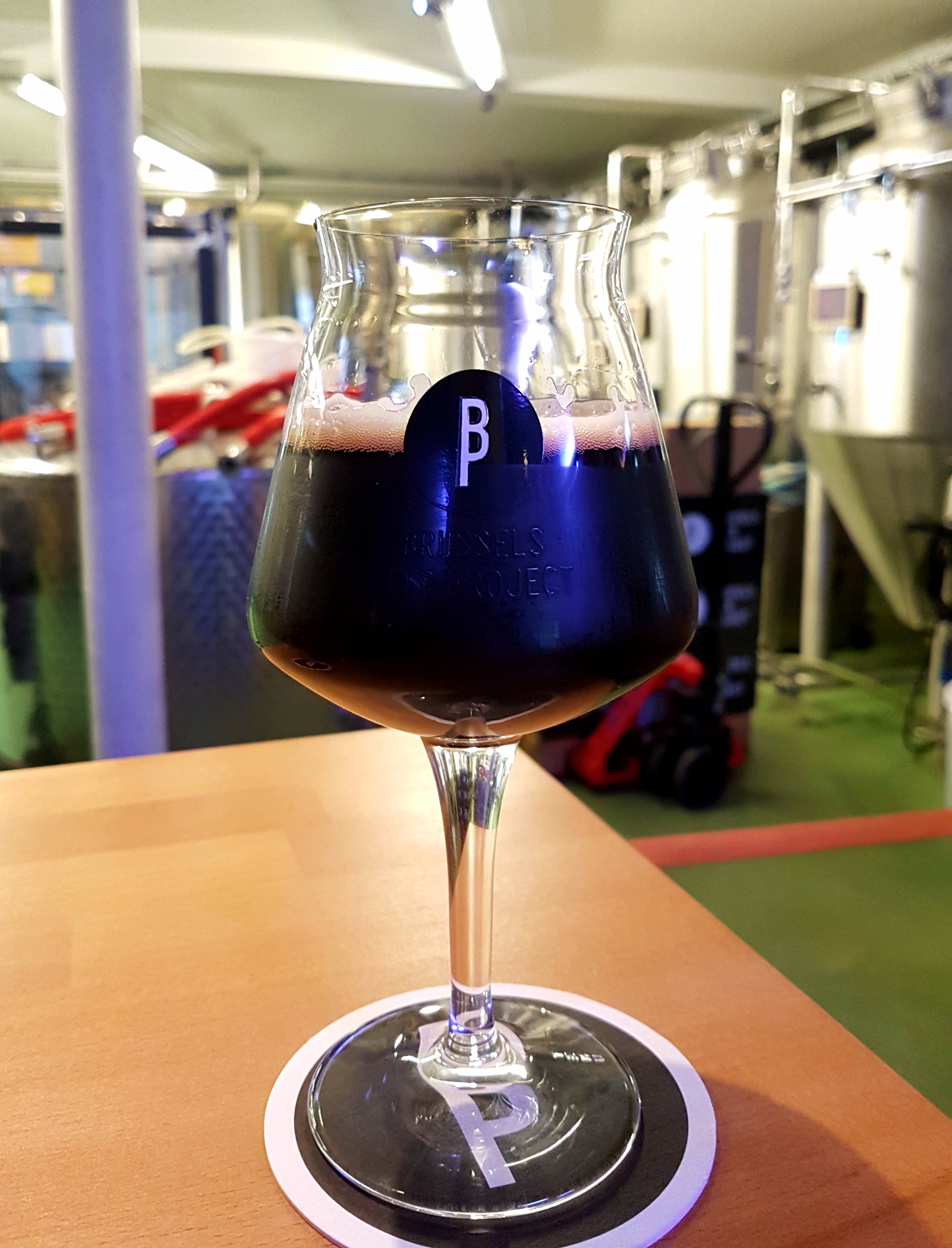
Het Zinneke (a.k.a. Zinneke Pis)
Not officially a member of the Pis family, the officially named “Het Zinneke” is a statue of a dog urinating which can be spotted on the way from BBP to the Cantillon Brewery. This statue was installed in 1998 and is part of a series of statues around Brussels by artist Tom Frantzen.
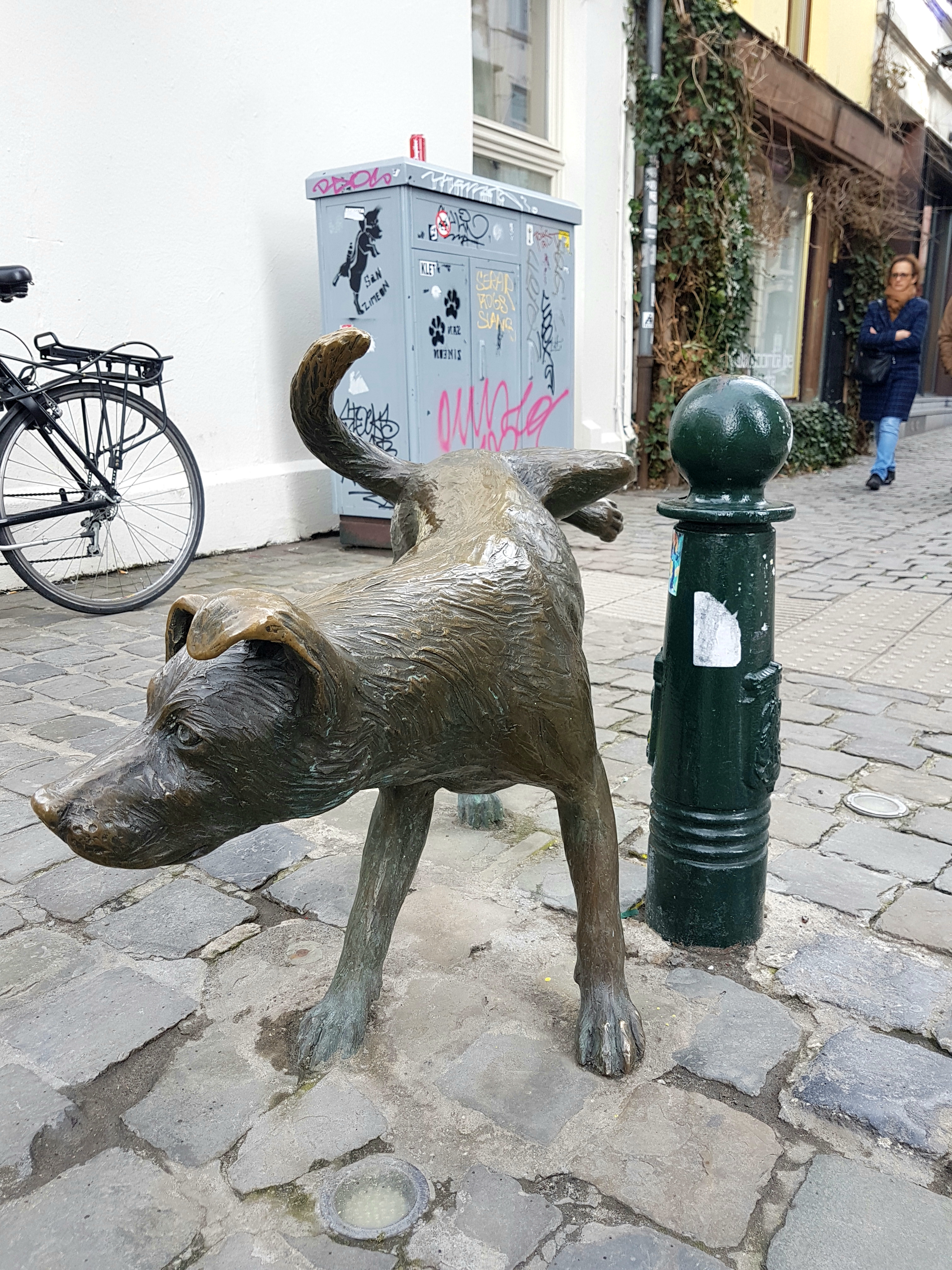
Brasserie Cantillon
website
Here, in my opinion, is the top beer site in Brussels. Honestly, I did not know this place even existed until I planned this hike. The walk to the brewery gives you a good taste of the multi-cultural bouquet which is Brussels and as you are reaching the brewery, you will wonder how on Earth a brewery of a prestigious geuze ended up in this neighborhood. The moment you walk into the brewery, you see and smell the wooden casks storing the beer. The tasting area and shop can barely contain the number of visitors but there is a great atmosphere here which is beneficial to help enjoy these sour beers. A gueze is a mixture of different age lambics. Lambics are beers made from wild yeast that come from being exposed to the atmosphere. When the lambics are mixed, additional sugar is added to allow more fermentation in the bottle.

I didn’t take the tour, but rather spent the time sharing a bottle of Fou’ Foune
during a serendipitous encounter with a fellow American and beer lover. A day centered around beer which doesn’t involve making at least one friend means you are doing something wrong. And this was one time when serendipity got it completely right. Part of the enjoyment of geuze are the faces one makes when sipping it, but if the only face is yours, then what fun is it? Gueze is for me similar to German rauchbier. Give me one in its native element and I will love it, otherwise I am probably not going to drink it too often.

L ‘Ermitage Nanobrasserie
Just around the corner from Brasserie Cantillon was perhaps my second favorite stop of the day, mainly because it was so unexpected. But this is a great bohemian hole-in-the-wall kind of place to stop in for a flight.

La Porte Noire
website
An atmospheric 16th century cellar bar with medieval decor and a great beer, whisky, and rum selection.

Moeder Lambic
website
A great beer bar with a fine selection (not just lambic).

Poechenellekelder
website
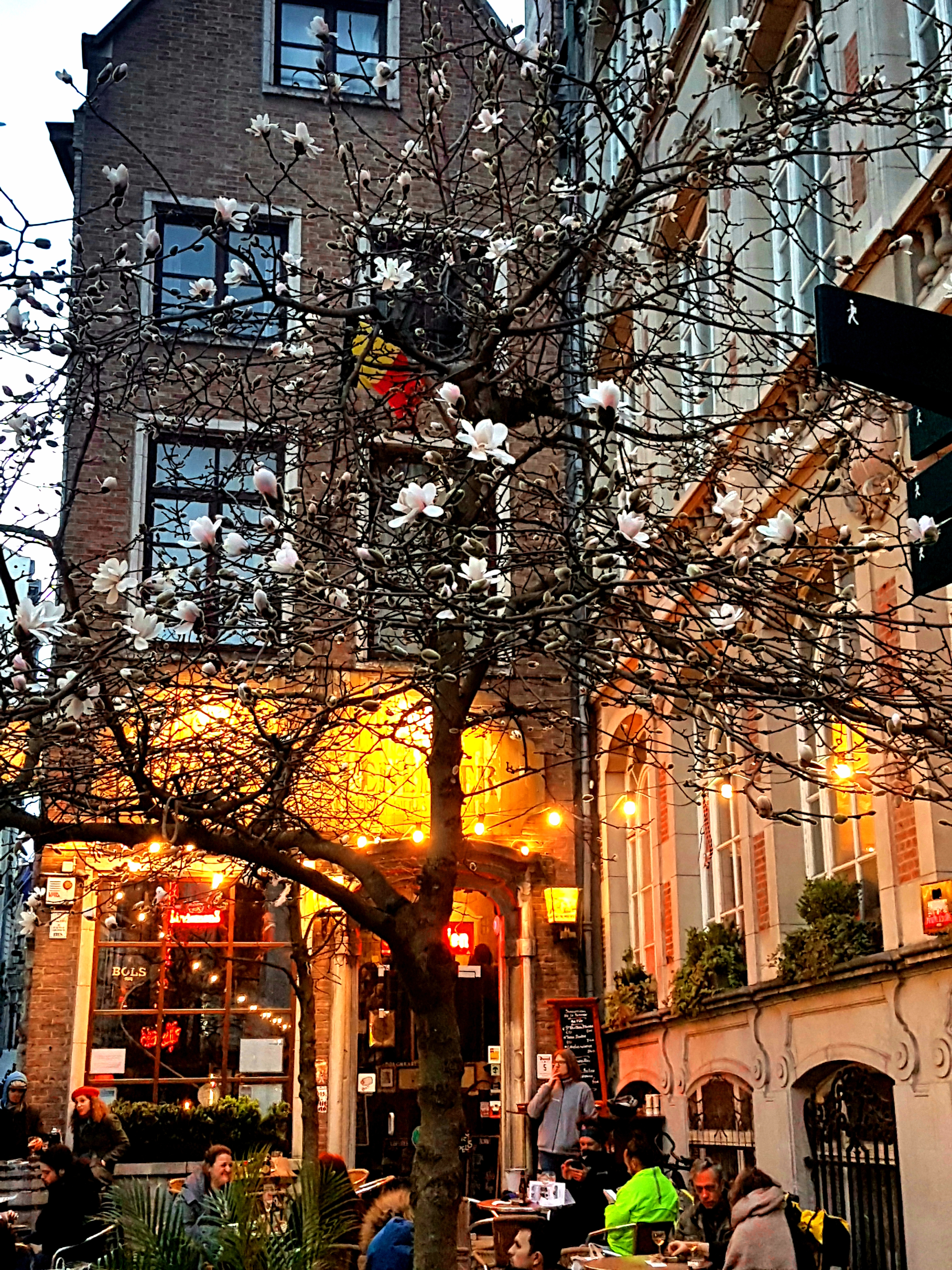
Deep down this is my favorite beer bar in Brussels. It has a very traditional atmosphere and the interior is a virtual cabinet of curiosities. The inside often seems totally booked and the staff can be very pushy when you enter without a reservation (probably due to the number of times they have to turn people ‘away at the gate’). If you can manage to get lucky in the winter, it is a great place for a soup and beer. When the weather is nice, the outside seating is precious as it is treasure trove of people watching because across the street is the final pissing statue of the hike.

Manneken Pis

Look up any list of the most overrated sites in Europe and for sure this famous statue will surely make the list. Seen in the correct light, I am not sure I entirely agree. Yes, it is one of the most annoying sites but that is no fault of the little guy doing what beer drinkers spend a lot of time doing. It is the mob of giddy Instagram-era tourists posing and jockeying for position. One reason I cannot say that the site is overrated is because it is not something from the late 1800’s or 1900’s which became famous simply because of the pissing posture. This dude has been around since at least the mid 15th century. Wrap your head around that. The form that you see today was sculpted in 1618-19. Today it is a replica because of the numerous theft attempts over the years. Somehow though I think Manneken prefers to be disrespected as an underdog in the guidebooks. He certainly has the perfect eternal gesture to those detractors. I say cheers to the ultimate symbol of the beer side effect (no, not the bad texting).
Final Words
Like Manneken Pis, does Brussels deserve the “over-rated” title that seems to pervade classic travel writing and my own preconceptions? If I were to recommend places to visit in Belgium for the beer lover, Brussels would still not be at the top of the list. However, as I discovered, Brussels can stand on its own just fine and in fact I never gave it enough credit. If you can get around the occasional tourist horde, you will find a city whose history is not quite so obvious but will reward you with a better understanding of what Belgium really is and that is knowledge that is invaluable to appreciate the places which have that “special Belgian flavor”. And when you visit, give a nod to the golden statue of Charles of Lorraine and spend the day like you just found out he recovered from his illness.

Footnote
Next to Brussels Central Station is a Brewdog Brewpub which was deliberately left off of this list because to be honest, a commercial international brewpub like Brewdog doesn’t enrich the experience of visiting Brussels.

Brussels is one of only two European cities I have disliked (Milan is the other) — but you actually have me wondering whether I didn’t give Brussels a fair shot. Wonderful post! In fact, wonderful blog. I love your writing, and the way you seamlessly combine history and culture with your own observations.
LikeLiked by 1 person
Thank you Heide… it is this type of feedback that keeps inspiring me. I am looking forward to your Mont St. Michel posts. One of my favorite places.
LikeLiked by 1 person
How kind of you to reply! I feel like a bit of a stalker for all of your old posts I’ve been reading — especially the ones on the German Christmas markets. I envy you your far-ranging travels! And how wonderful too that you’re a fellow fan of Mont St. Michel. My three posts are up and ready for perusal. I’ll be eager to hear your memories and impressions too!
LikeLiked by 1 person
Stalk away 😁 And indeed I will be whisked down memory lane as I read yours. I can already tell you are talented at capturing mood in your photography…
LikeLiked by 1 person
I really enjoyed this! A good tour well shared. I know a little more about beer, Brussels history and some ancient statues doing what statues do when they’ve had a great brew in a friendly spot. 😊
LikeLiked by 1 person
Thank you so much Suzanne! 😊 I am always proud after your comments. They mean a lot to me.
LikeLiked by 1 person
That’s very kind of you 😊 It’s really my pleasure! It’s a joy to read you. Such beautiful places steeped in history. I should probably say brewed in history 🙃. And you always make me smile and giggle a bit.
LikeLiked by 1 person